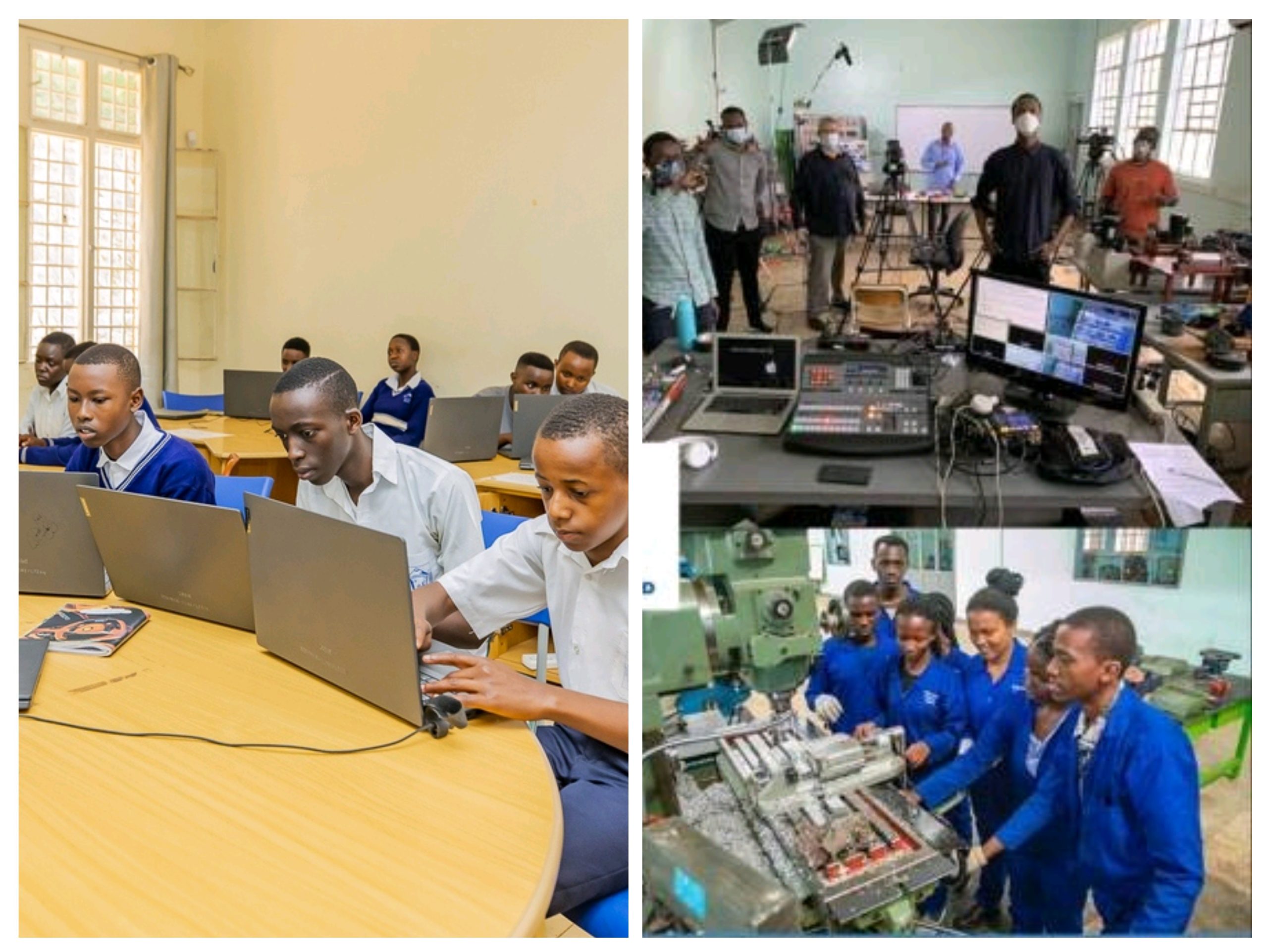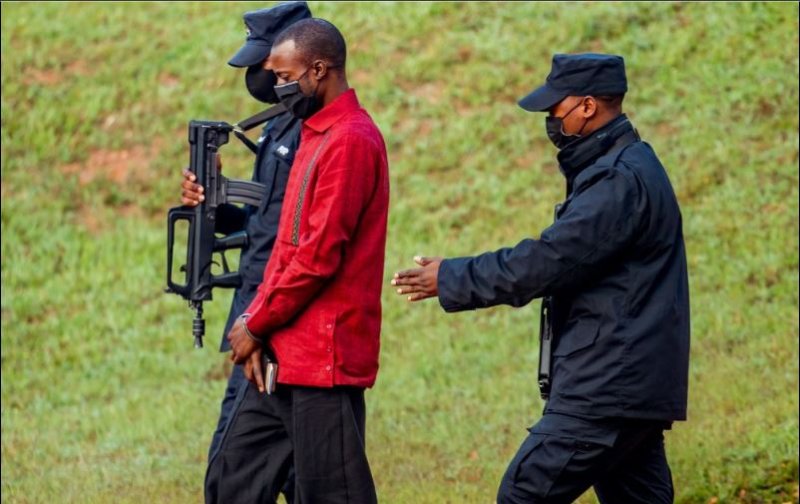Following the devastating aftermath of the 1994 Genocide against the Tutsi, the education sector, like other sectors, was left in ruins where many teachers were killed, or fled due to genocide crimes, and education infrastructure was destroyed.
Despite this, the government demonstrated a strong commitment to education reconstruction, and three decades on, Rwanda has made significant strides in revamping its education system.
Over the years, Rwanda has experienced an increase in foreign students from nations such as Chad, Ghana, Nigeria, Haiti, and neighbouring countries like Tanzania, Uganda, and Kenya.
The reasons behind this include stable security, political stability, and improving the quality of education. Rwanda’s education sector now features skilled faculty personnel, top-notch learning standards, and global acknowledgment for academic programmes.
Free education
The country made it easy for all Rwandans to access education freely. Through the Nine-Year-Basic Education programme initiated by the government in 2009, all learners do compulsory primary level (six years) plus lower secondary level (ordinary level) for free.
The 9-year fee-free basic and compulsory education programme was later extended to 12 years of basic education in 2012.
The Basic Education (BE) sub-sector is composed of pre-primary, primary, and secondary education levels. For this to be possible, the government has continued investing in education through the Ministry of Education and its partners.
Change of language of instruction from French to English In 2008, the government enacted a shift in the medium of instruction from French, which had been used for over a century, to English as the sole medium of instruction.
Although at first, it was a challenge for both instructors and learners, it is believed that proficiency in English will offer more opportunities internationally for learners.
School feeding to curb malnutrition
There was a unique challenge of feeding school children, particularly in day primary schools, however, the homegrown school feeding programme began in Rwanda in 2016, and through the government, with the support of other donor agencies, over 80,000 school children receive meals in over 100 schools in some of the most vulnerable and food insecure regions in Rwanda.
Students have meal through schoolfeeding program at Groupe Scolaire Ayabaraya in Kicukiro district on Monday, February 28,2023.Craish Bahizi
Students have meal through schoolfeeding program at Groupe Scolaire Ayabaraya in Kicukiro district on Monday, February 28,2023.Craish Bahizi
The programme brings numerous benefits from improving focus, nutrition, school attendance, and hygiene.
Improved education quality/practical learning
The country has made education a priority sector to support its ambitious development objectives and grow an economy based on an educated workforce.
One of the biggest achievements has been increasing access to education for all children of school-going age.
With the construction of more infrastructure, having more classrooms gives a smaller class size and a better learning environment in terms of teacher-pupil contact and use of learning materials.
The new classrooms, too, provide a friendlier climate for learning. Equally, when pupils and teachers do not have long distances to walk to school, they have more time for their lessons.
In 2015, Rwanda introduced a competence-based curriculum (CBC) from a knowledge-based curriculum for primary and secondary schools.
According to the Ministry of Education, this was a shift from mere acquisition of knowledge to emphasis on its application. It increases students’ engagement in a lesson to make it more participatory.
The Ministry of Education has created a publishing house to produce teaching materials for primary and secondary schools in the country. The materials follow the new competence-based curriculum and observe international standards.
Status of teachers’ welfare over the years
The suitable well-being of teachers plays a big role in the enhancement of the education sector. According to the Director General of Rwanda Basic Education Board (REB), Nelson Mbarushimana, REB has admitted the best-performing students in Teacher Training Colleges (TTCs) in Rwanda and subsidised school fees to attract the best teachers.
“We have constructed teachers’ houses per sector to reduce the distance they travel, increased their salaries in 2022, with a 10 per cent salary increment per year, a full study bursary to in-service teachers at the University of Rwanda – College of Education (UR-CE), and Continuous Professional Development (CPD) activities to escalate educators’ teaching ability,” Mbarushimana said.
He added that there is a quick transparent online recruitment system, and a Girinka Mwarimu (One Cow Per Teacher) programme to improve their economic status, strengthen Umwalimu SACCO, and increase lending capacity to teachers on subsidised interest rates to increase teachers’ acquiring power.
Learning about the 1994 Genocide against the Tutsi in schools
REB has encouraged educators to teach about the Genocide, by including the topic in the history curriculum and teachers’ guides and textbooks, alongside regular refresher training for history teachers to guide them, Mbarushimana noted.
The Curriculum Teaching and Learning Resources Department (CTLRD) worked with the University of Rwanda, Aegis Trust, CNLG, Never Again, MINUBUMWE, and other partners on the Teachers’ Guidance to Teaching Rwandan History.
Use of technology in learning
Science and technology are one of the key priorities of the government, as such, REB in collaboration with the University of Rwanda-College of Education developed 888 ICT-integrated scripted lessons for P4-P6 (Maths and Science and Elementary Technology) and uploaded them to teacher’s laptops to improve the delivery of the subjects in schools.
“A total of 1,185 scripted lessons for S1-S3 (Biology, Physics) and over 18,000 copies in Kinyarwanda and English were sent to schools to help History teachers effectively teach the History of Rwanda.
“Math and Chemistry were also developed and uploaded on teachers’ laptops for secondary schools as well,” Mbarushimana said.
Virtual science labs
Over 29 virtual science laboratories (VSL) were developed for Mathematics, Biology, Chemistry, and Physics for secondary schools in collaboration with the University of Rwanda; College of Education.
VSL is an interactive, digital simulation of activities that typically take place in a physical laboratory setting. VSL offers a digital environment for students and researchers to conduct experiments, analyse data, and learn scientific concepts.
Boosting Math and Science through experimental user guides
According to Mbarushimana, the Math and Science experimental user guide is a document developed by REB-CTLRD for teachers and students with experiments or activities for science-practical lessons.
Experiments play a very crucial role in the intellectual development of students as they are viewed as active learners and not passive recipients of knowledge when carrying out experiments.
Role of partnerships
Over the past 30 years, the Curriculum, Teaching, and Learning Resources (CTLR) department has benefited significantly from various development partners.
Their contributions have been instrumental in achieving the government’s mandate of delivering quality education across all levels.
“In the early years following the Genocide, development partners’ support was crucial for Rwanda’s recovery, including educational support for increased access to education. It was not until 2005 that the development partners’ support focused on the curriculum department’s priorities,” Mbarushimana said.
ICT achievements
Rwanda has made significant progress when it comes to integrating Information and Communication Technology (ICT) in basic education. This includes policy formulation, ICT devices distribution to schools, teacher capacity development, internet infrastructure, and digital content development.
According to the Ministry of Education, 1,868 primary schools have received laptops, and 958 secondary schools are equipped with smart classrooms.
Each smart classroom has 50 laptops for students, a projector, and access to internet connectivity. These smart classrooms aim to enhance the learning experience.
Schools have received laptops for more than 16,350 teachers to enable the use and integration of ICT in teaching and 500 pre-primary schools, 418 primary schools, and 958 secondary schools have received projectors.
An e-learning platform was developed and is currently operational and accessible at www.elearning.reb.rw
Before 1994, ICT was not yet considered an option in pre-primary, primary, and secondary Schools. ICT was not integrated into the national curriculum in basic education until 2006 when ICT was taught as a subject to increase digital literacy in secondary schools.
Although there are still challenges including limited ICT infrastructure, device maintenance, lack of digital skills by the teachers, and limitations on interactive digital content, and others, there are initiatives in place to curb them, for example, the One Laptop per Teacher initiative to facilitate teachers to use ICT in teaching consistently.
“Teachers are trained on basic troubleshooting skills to enable them to perform basic repair and maintenance of devices in their respective schools, remote support services for issues related to devices or the internet are offered, and partnering with local Internet Service Providers (ISP), mainly telecom companies, to zero-rate selected local education platforms,” Mbarushimana noted.
SOURCE: TNT





